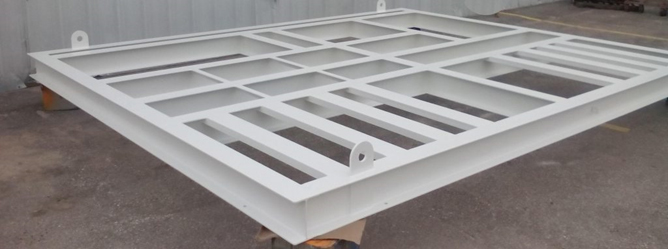Skid Fabrication
Skid Fabrication
Structural skids allow for the mounting of equipment to a piping system, and for fabrication to be conducted in a shop environment. This reduces cost and complexity compared to equipment integration in this field. In this article, you will learn about skid engineering, design, construction, testing, and accessories.
Structural skids are cost effective and can be built quickly. They are designed to contain either a complete process system or a serve a specific function. Structural skids may also systematize a manufacturing process into logical units.
While skid designs vary according to client specifications, the following elements are recognized in all skids:
- Portable design – Skid systems provide easy transport over field fabrication units are self-contained units and built within frames.
- Accessibility – Skids have an accessible layout that is compliant to codes and regulations while allowing access to critical process equipment.
- Small footprint – Tanks, piping, and necessary process equipment are organized to take up the smallest amount of room possible.
- Controlled assembly – Skids are typically built in a controlled facility where access to welding materials, pneumatic air, and overhead lifts is available.
- Process Connections – Process connections can be gathered into one spot on the skid or placed at “tie-points” that have been specified by the client.
- Factory Acceptance Testing (FAT) – The FAT is completed before skids are shipped to the site, ensuring the system operates as designed and on-site startup time is reduced.
- The following methods are commonly utilized in the development of skids.
- Gas metal arc welding (GMAW)– This process forms an electric arc between a consumable MIG wire electrode and the workpiece metal. Heated metal melts and joins together.
- Flux-cored arc welding (FCAW)– This semi-automatic/automatic arc welding process requires continuously fed voltage to join metals.
- Metalcore arc welding (MCAW)– uses heat generated by DC electric arc to join metal in the joint.

Additionally, weld characteristics are specified on the skid drawing itself, or more generically on a weld map. The type of welds varies greatly. Most welding done on skids are filet welds in a skip or seam configuration. The skip weld alternates between non-weld and welded segments whereas the seam weld is applied continuously along the joint.
 Material Type
Material Type
Structural skids may require specific materials for construction due to reasons such as heating elements, structural strength and durability. Carbon steel is the most common skid material. Stainless steel appears in the industry at times, with alloys, fiberglass, and plastic being much rarer. Most projects utilize steel materials due to their structural integrity, non-malleable properties, and low cost.
